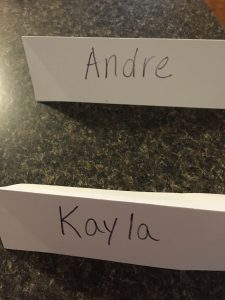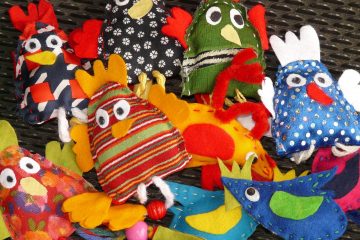What does your seating arrangement say about your classroom style?
In my last post I made a side comment about how I handle seating assignments and discovered that the only time I’ve written about it on the blog was in the last bullet point in a post on increasing student TL use. How unfortunate, since this method of seating students, an idea I got from my ESL methods professor in graduate school (thanks Alexandra!), has been one of the most effective ways for me to improve many aspects of my classroom, from student behavior to pair/group activities.
One of our tasks in the first days of school is for every student to make a name tent (label a 5×8 or 4×6 card folded in half). In elementary, I do them myself and it’s a very effective way to start out 100% in the TL with student comprehension; it only takes a few TL questions (What’s your name? Is it John? No, it’s not John. Is it Eddie? No, your name isn’t Eddie. I know your name. Your name is Tyler! -write ‘Tyler’-) for even 3-year-olds to begin answering me with their name when I ask
Y tú, ¿cómo te llamas?
In secondary, students do them on their own. They can use markers to decorate if they want. We can add a Spanish name to the other side if they’d like to have a Spanish name for class. At the end of class, I collect them all, put a rubber band around them, label them with a sticky note identifying the class (2-II for Spanish 2, second period, or just VII for seventh period, or “Keeton” for Mrs. Keeton’s kindergarten), and let the students know that the next day, and every class, they will sit where their name tent is.
For the seating arrangement, I use groups of tables. For classes larger than 10 students, two tables are side by side, right against each other along the length, with two students on the outside of each, and more on the ends if I need them:
I reproduced those two tables toward the back, so I had a total of 4 groups, with seats for between 16 and 24 students, and one long table at the back for more students (our class size did not typically get that high).
Then, right before every class, I would spend about 45 seconds going around the room setting out the name tents. I alternated – one in this group, next tent in that group, next tent in the third group, and so on, so that by collecting them all together at the end of a class period, and alternating them to set them out the next day, the seating arrangement almost always varied greatly. I even did this all the way down to 4-year-olds who sat in a semicircle on the floor when I went to their classroom; it was part of our routine to stop what they were doing and come find their name to sit behind (literacy skills!).
Here are some of the biggest benefits this arrangement gave my class:
- I could easily manipulate the seating of students who could not sit next to each other without causing problems.
- I could reward students by purposely seating them next to a good friend.
- There was always an opportunity for new scaffolding. At each table likely someone was more proficient than you (you being a student), and/or someone was less proficient than you, and/or tomorrow it would be different. And I could plan this based on what I knew about individual students.
- I could quickly quell complaints about seating with “Put up with it today, you know tomorrow will be different.”
- My elementary students would get a “star” on their sheet for collecting the names for me, and they loved this.
- Stressing out to memorize my students’ names as fast as possible = not an issue.
I did occasionally have an issue with students switching around the name tents when I wasn’t looking, but since it was usually someone moving theirs next to a person I deliberately had not put them by, I caught it pretty quickly and took care of it.
My administrator loved the communicative, collaborative nature of my seating arrangement so much that he held all faculty meetings in my room.
Think a bit and make a plan: how could changing your seating make your class more communicative?
6 Comments
Comments are closed.





[…] have something in mind) and then check with me. I also plan to have them make (and decorate!) name cards at this station. •Syllabus: Again, since we’re 1:1, and my syllabus is digital, I’ll […]
[…] possibly in Spanish 1 as well. And lastly, I’m going to give Sara-Elizabeth Cottrell’s name card rotating seat assignment idea a try. One of the things I love most about teaching is how every day, week, month, and year is new, […]
[…] you can see in the pictures, I’m also using Sara-Elizabeth’s idea of varying the seating daily and so far, I like it. I’m learning names slowly, but since everyone has a name card, I can […]
[…] 2. Varied Seating: This is an idea I found from Sara-Elizabeth Cottrell that I loved, but felt like it would be hard to adapt. We only have six minutes in between each class, which is usually filled with getting kids out the door, putting technology away, collecting papers, and making a mad dash across the hallway to go to the bathroom. Changing seats every day didn’t seem realistic for that time frame, but I’ve been putting out their name cards every Monday to change up their seats and so far I’m enjoying it. It’s been a mixed bag with the kids but I’m hoping the novelty might win them over. […]
[…] that they’re always working with the same people. One class tried once, but the students love new seats every day as much as I do, and since day 1, there has been no culture of students picking groups – […]
[…] sit with these groups every day, which is a shakeup from the random seating that I’ve been doing for the last couple of years. Once the groups had decided on their […]